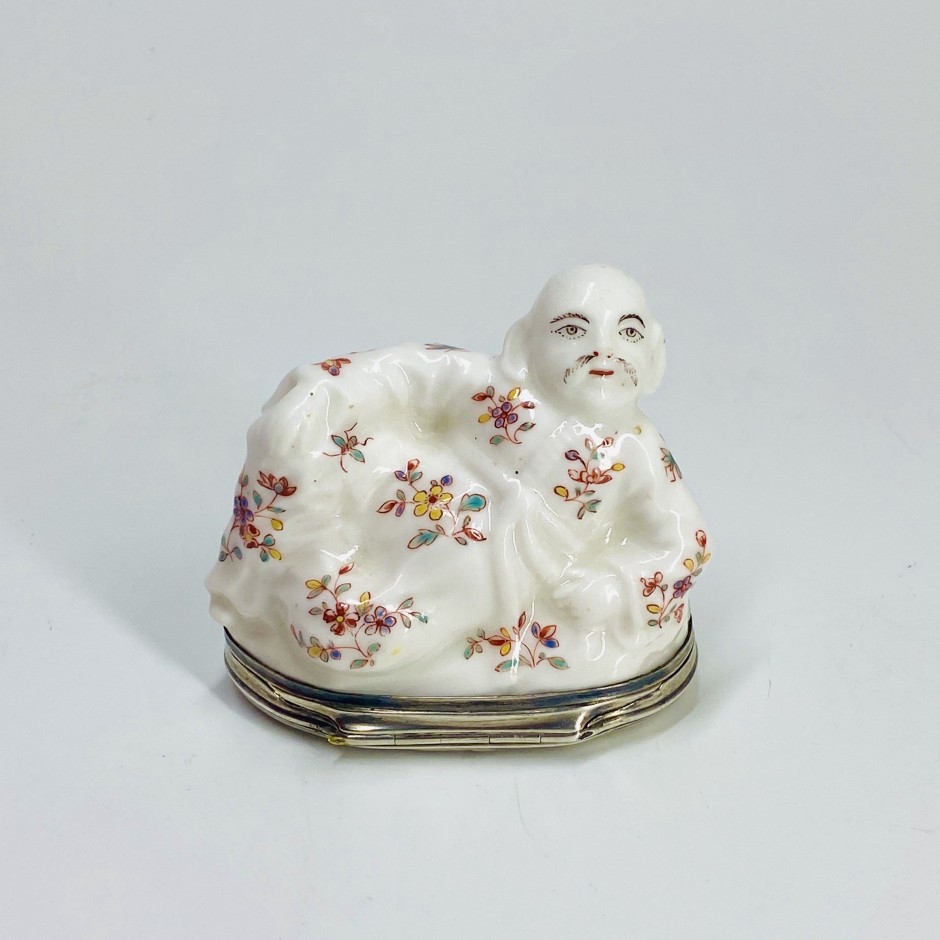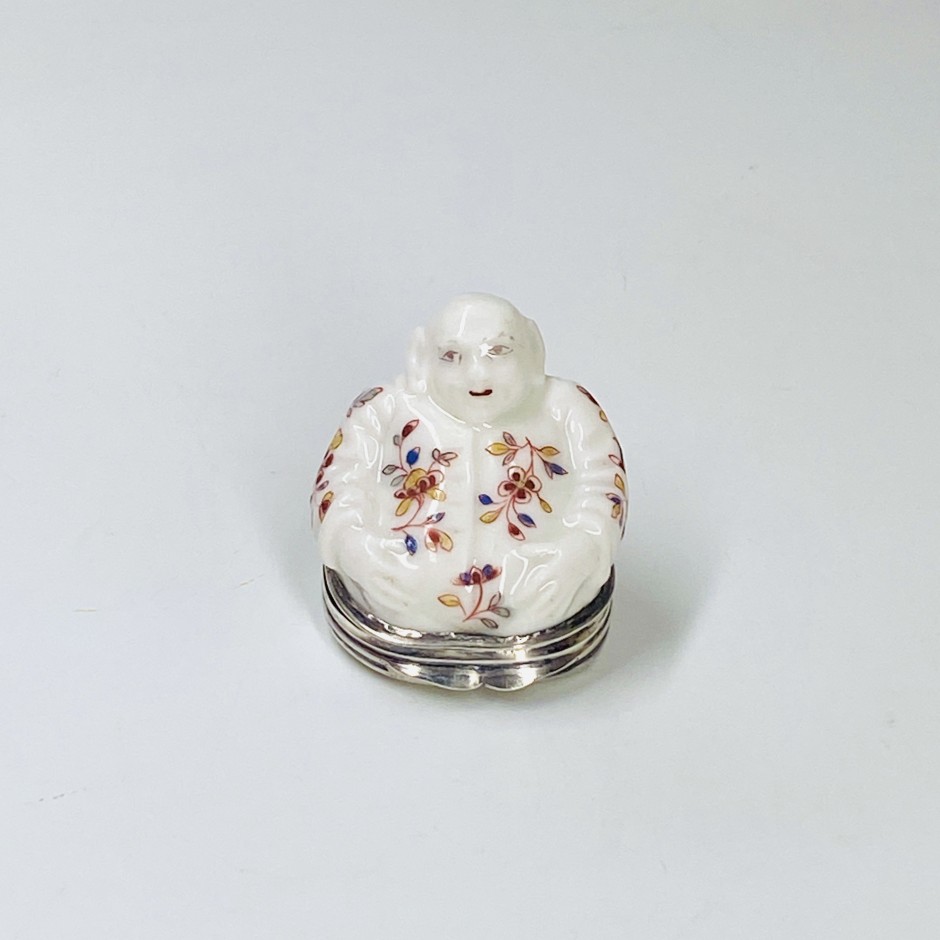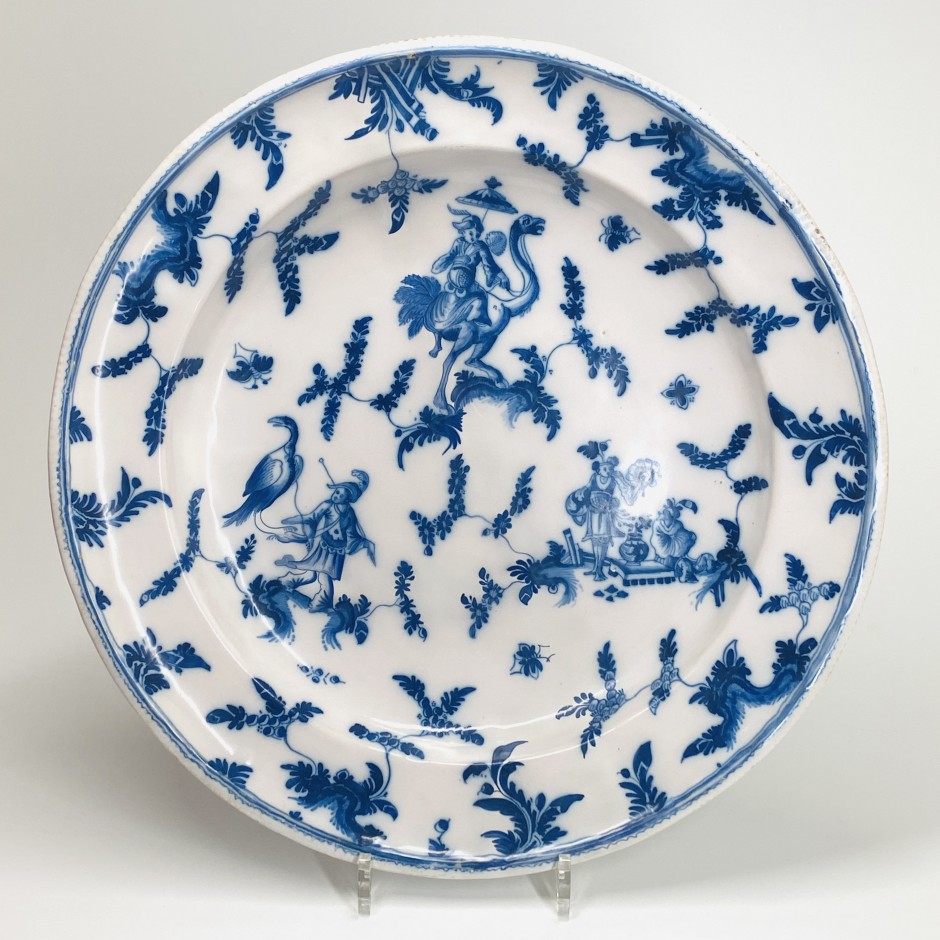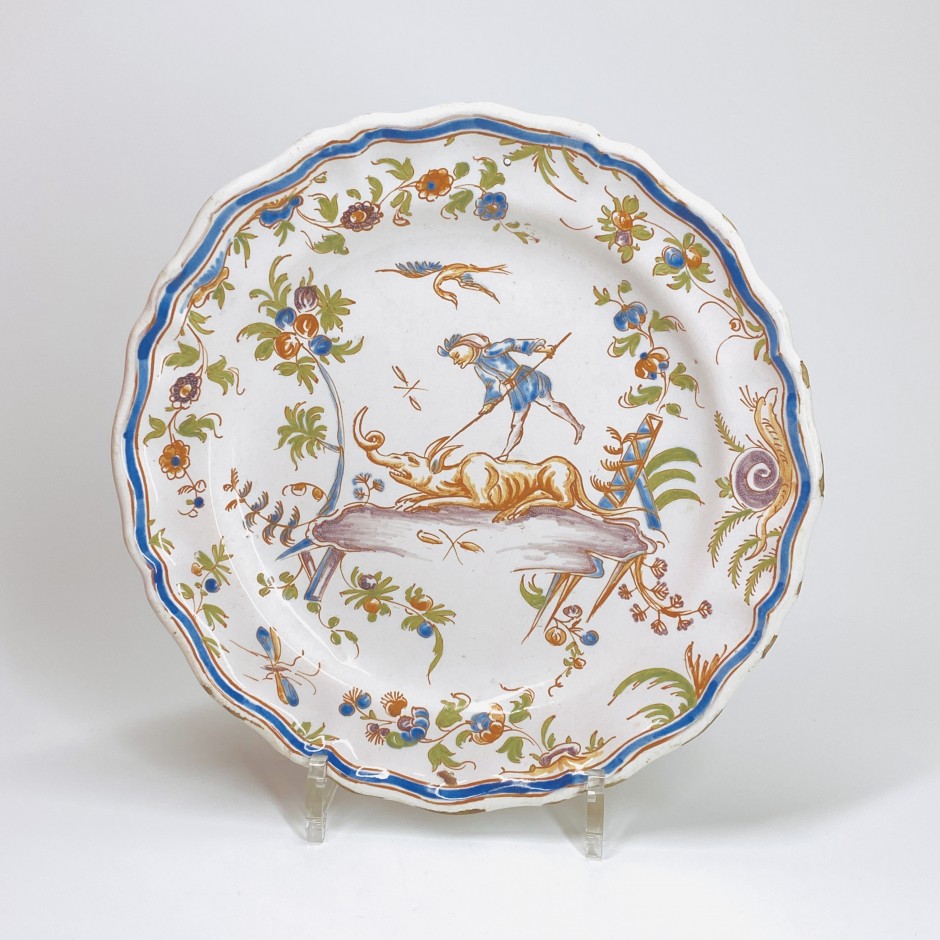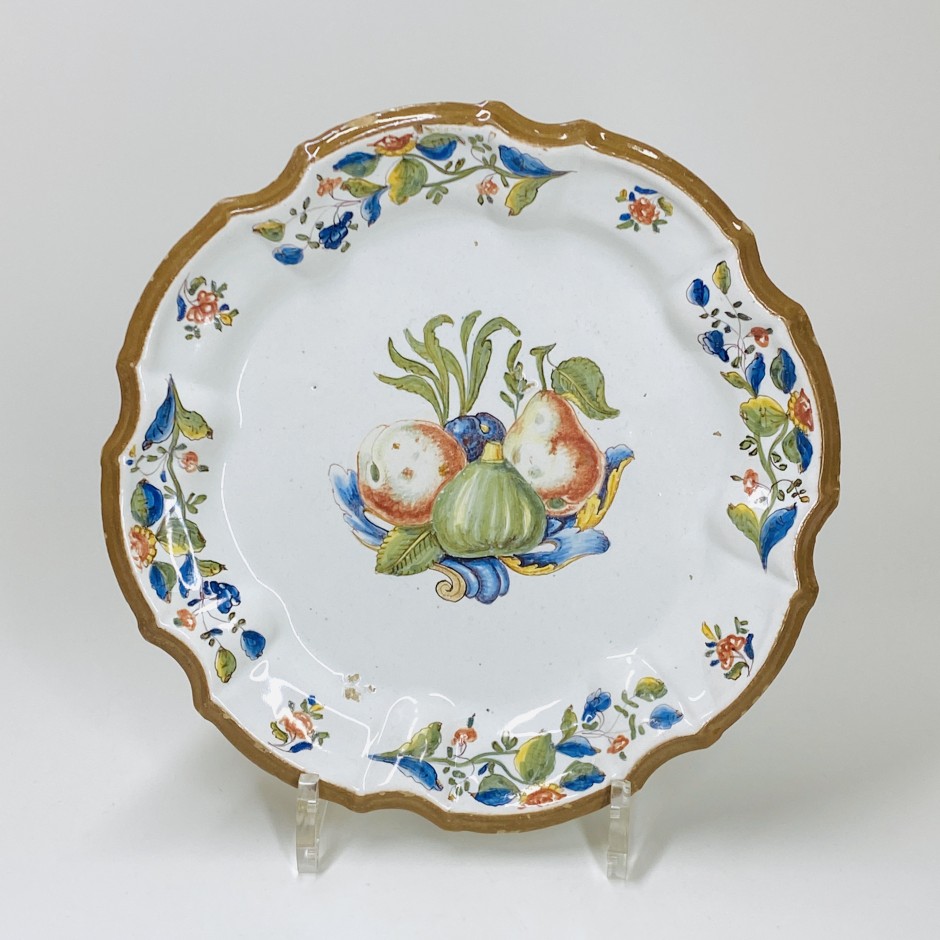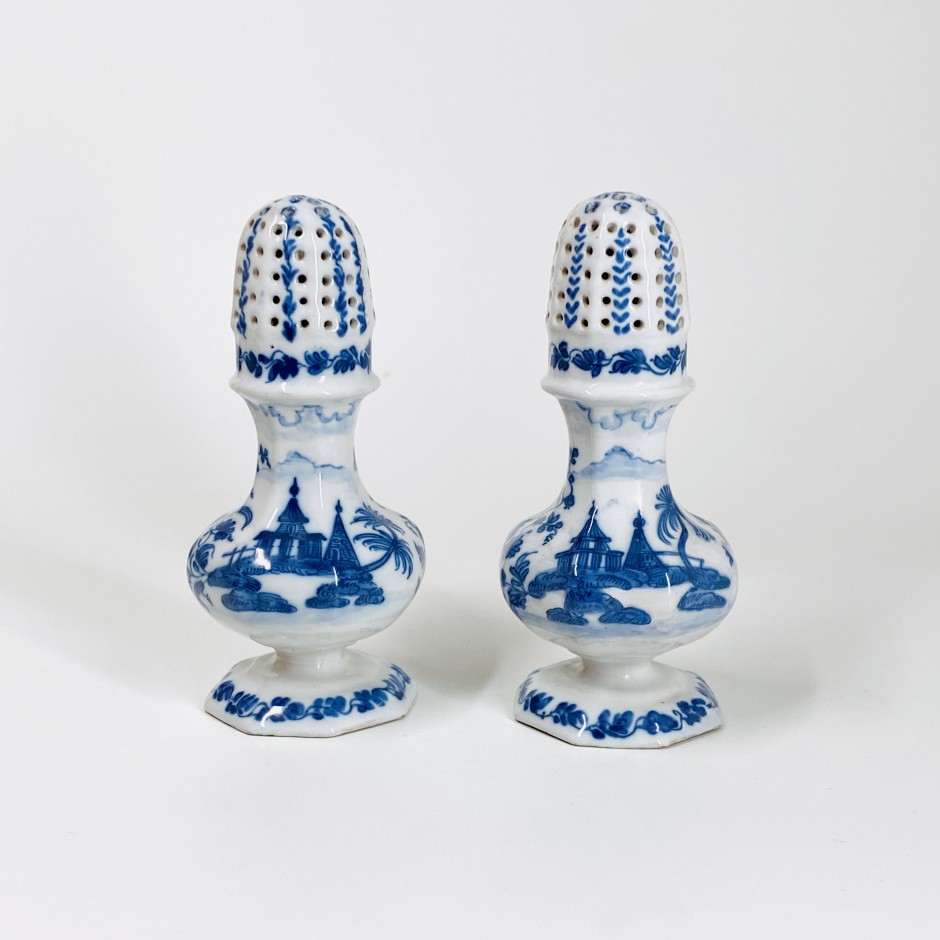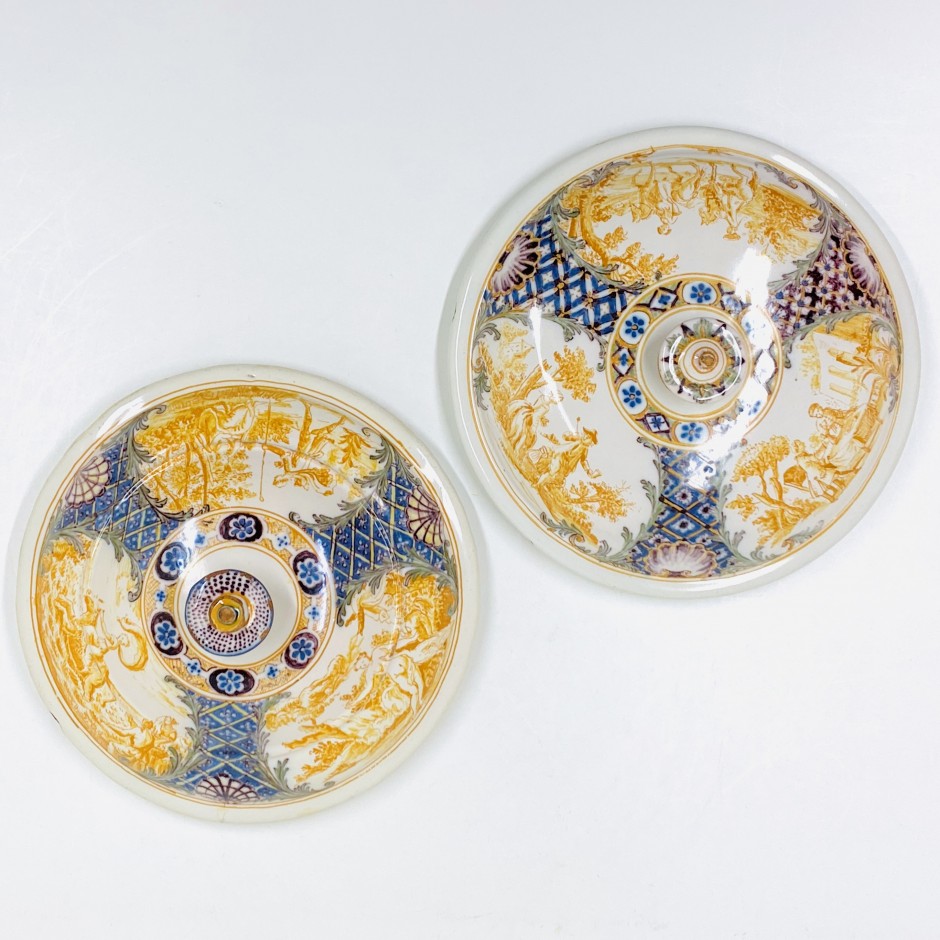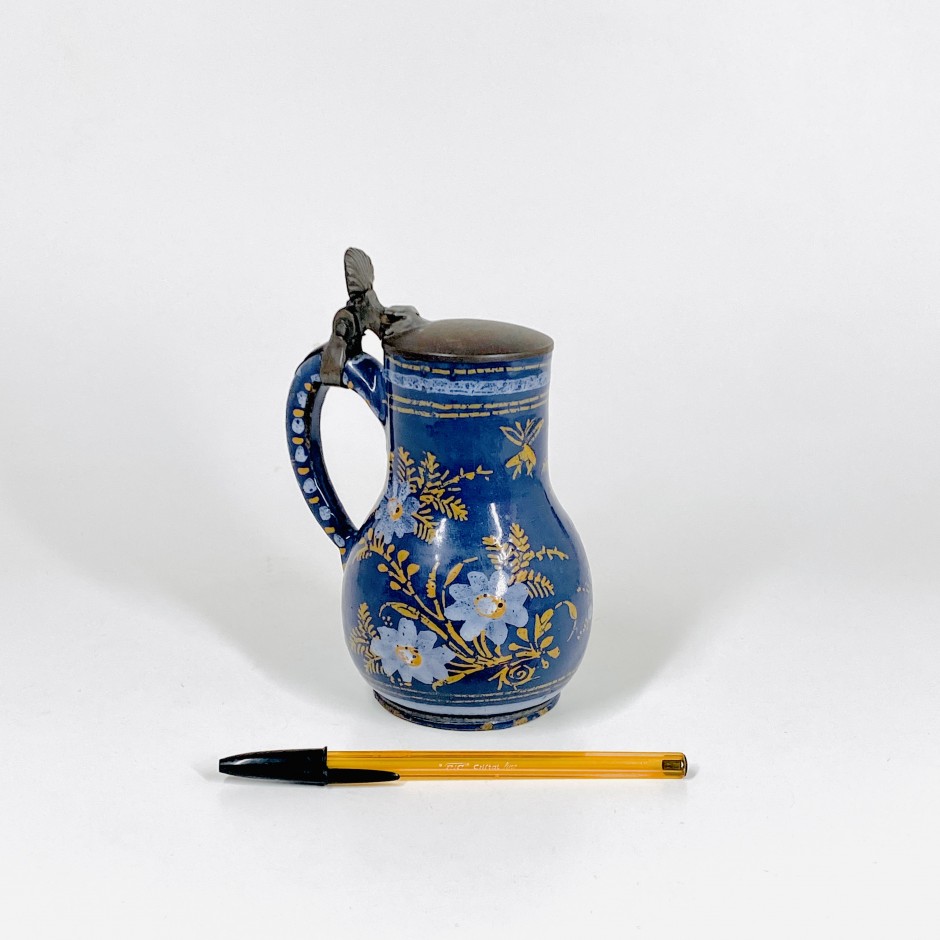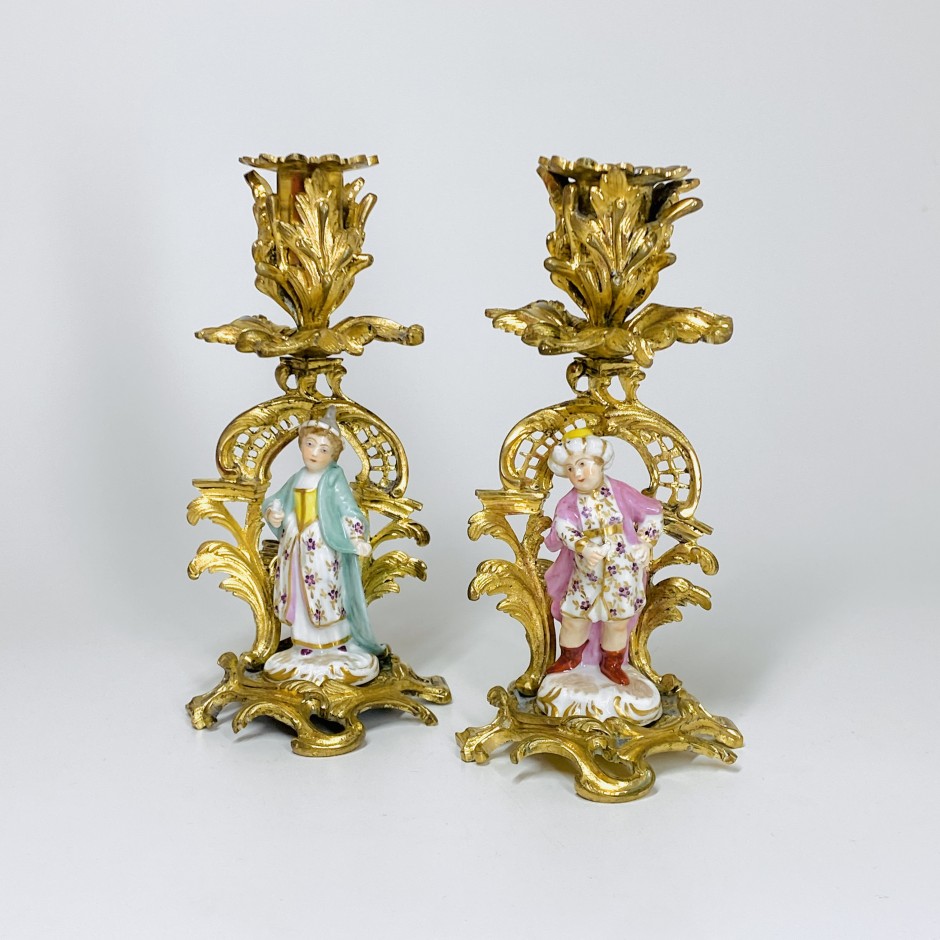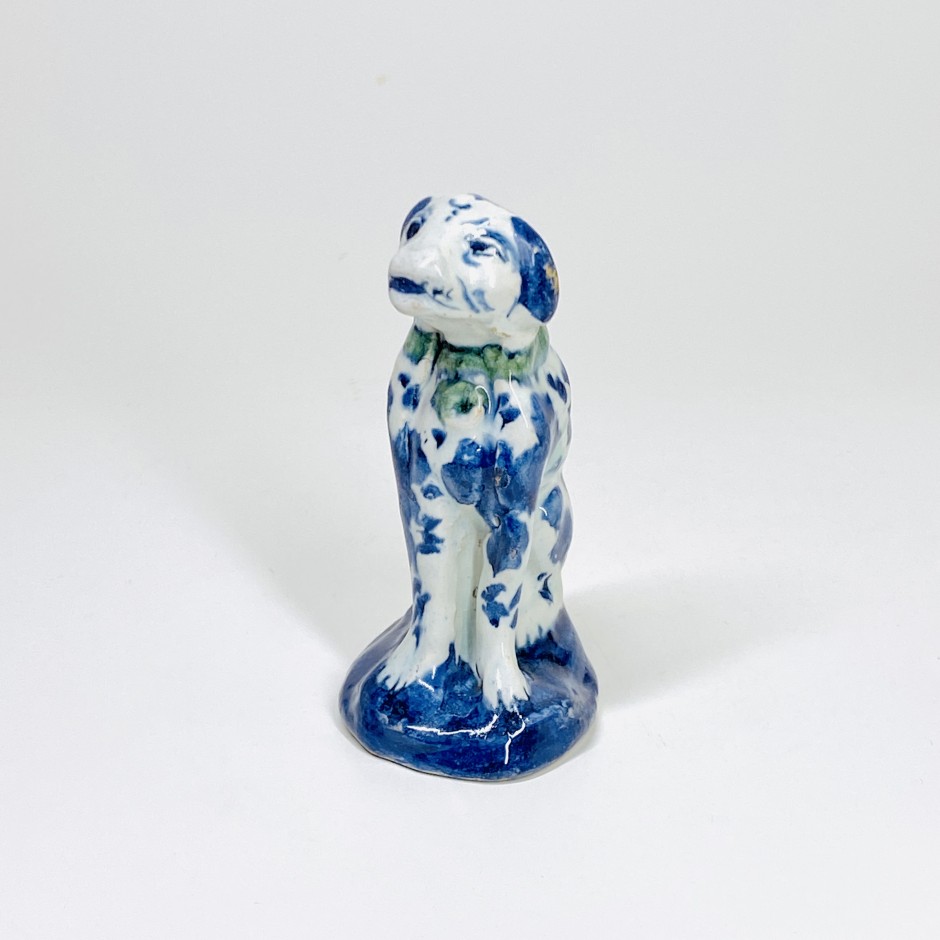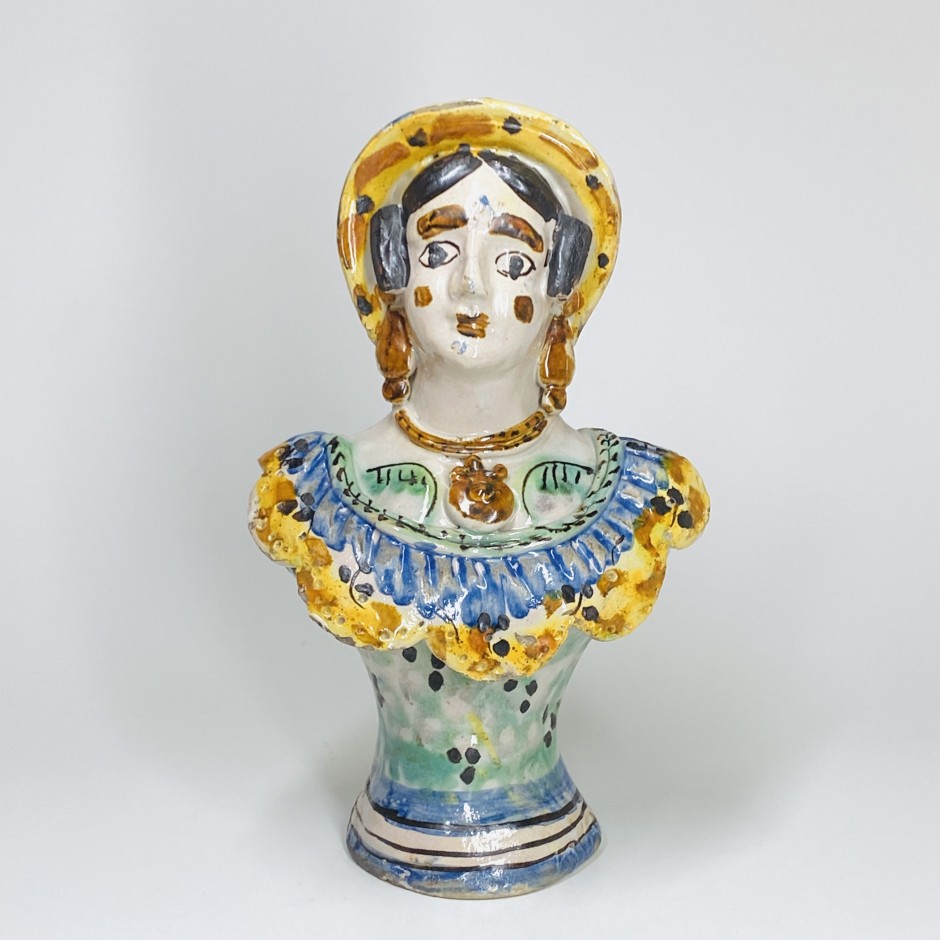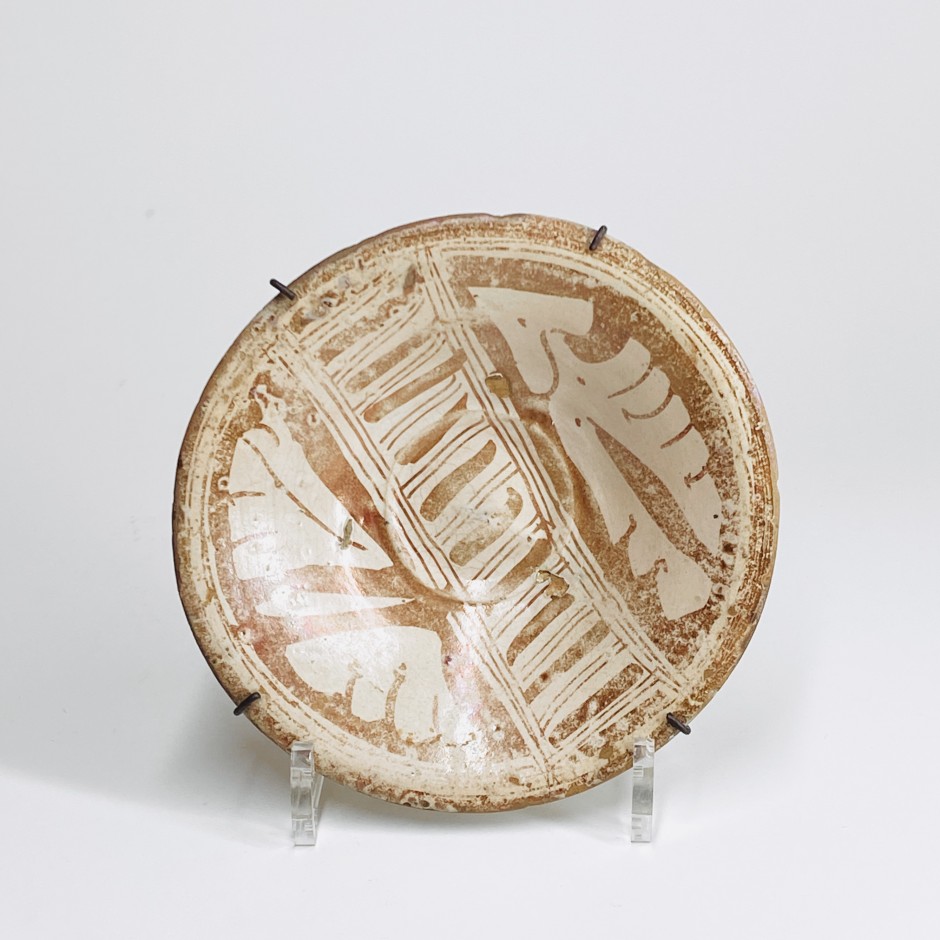Archives There are 774 products.
Saint-Cloud - Snuffbox depicting a reclining Chinese...
Snuff box in soft Saint-Cloud porcelain, mounted in silver, in the shape of a Chinese reclining in a long robe painted with scattered bouquets of oriental flowers attached to the waist by a belt, an insect on his head, lying on a mound decorated with an iron-red flower and green leaves, the cover with scattered decoration of flowers and insects - Eighteenth century - around 1740
Saint-Cloud - Covered box depicting a Buddha -...
Saint-Cloud - Charming little covered box depicting a Buddha seated with his hands on his stomach, decorated in polychromy with branches of flowers in the Kakiemon style. Silver mount, discharge hallmark, Paris 1744-1750. Eighteenth century - around 1740. Information and additional photos on request
Large earthenware dish from Moustiers - Eighteenth...
Very large earthenware dish from Moustiers with a very beautiful decoration in blue shades of a rare Chinese riding an ostrich, Chinese with a fan above a table accompanied by a seated Chinese and another character with a large bird on the arm, surrounded by large flowering branches - Eighteenth century
Earthenware plate from Lyon decorated with a man...
Amusing earthenware plate from Lyon with curved edge, polychrome decoration of a man bringing down a grotesque animal with a pike, bird in flight, curved tree and anamorphosis framing the scene, the wing decorated with a snail and flowering branches. EighteenIth century.
Nove di Bassano earthenware plate with fruit...
Plate with contoured edge with polychrome decoration in the center of fruits on rocaille foliage, the wing decorated with flowering stems, ocher fillet on the edge - Antonibon factory - Eighteenth century
Nove di Bassano - Pair of sprinklers decorated with...
Pair of Nove di Bassano earthenware shakers with blue monochrome decoration of pagodas and buildings surrounded by flowering branches - Eighteenth century.
Marseille - Fauchier - Two lids decorated in yellow...
Two pretty Marseille earthenware lids decorated in ocher yellow monochrome with a scene representing two horsemen, a gallant scene and two characters around a table for the first, and for the second three mythological scenes. In three separate medallions with motifs of lattices, branches and shells. Fauchier factory - Eighteenth century.
Small Nevers earthenware pitcher with Persian blue...
Charming little baluster-shaped pitcher in Nevers earthenware with floral decoration in fixed white and ocher on a Persian blue background - Seventeenth century
Pair of bronze hand candlesticks and porcelain...
Pair of hand candlesticks in porcelain and chiseled and gilded bronze. They represent a couple of young children wearing a Turkish costume, in Meissen porcelain, part of the series "disguised loves" standing on a gilded bronze terrace, rocaille, the statuettes are backed by a rocaille arch with trellis, topped of a bobèche. Leaf-shaped thumb rest.. "E.S" mark under the frame - Eighteenth century.
Delft - Statuette depicting a dog - Eighteenth...
Delft earthenware statuette in blue monochrome depicting a dog sitting on a terrace - Eighteenth century
Ariano Irpino (Italy) - Pitcher depicting a bust of...
Earthenware pitcher by Ariano Irpino with polychrome decoration depicting in relief the bust of a young woman - End of the eighteenth century
Hispano-Moorish ceramic bowl - Sixteenth Century - SOLD
Hispano-Moorish ceramic bowl with plain edge decorated with buff metallic luster with geometric decoration, reverse decorated with concentric threads. Spain - Aragon or Catalonia - Sixteenth century
